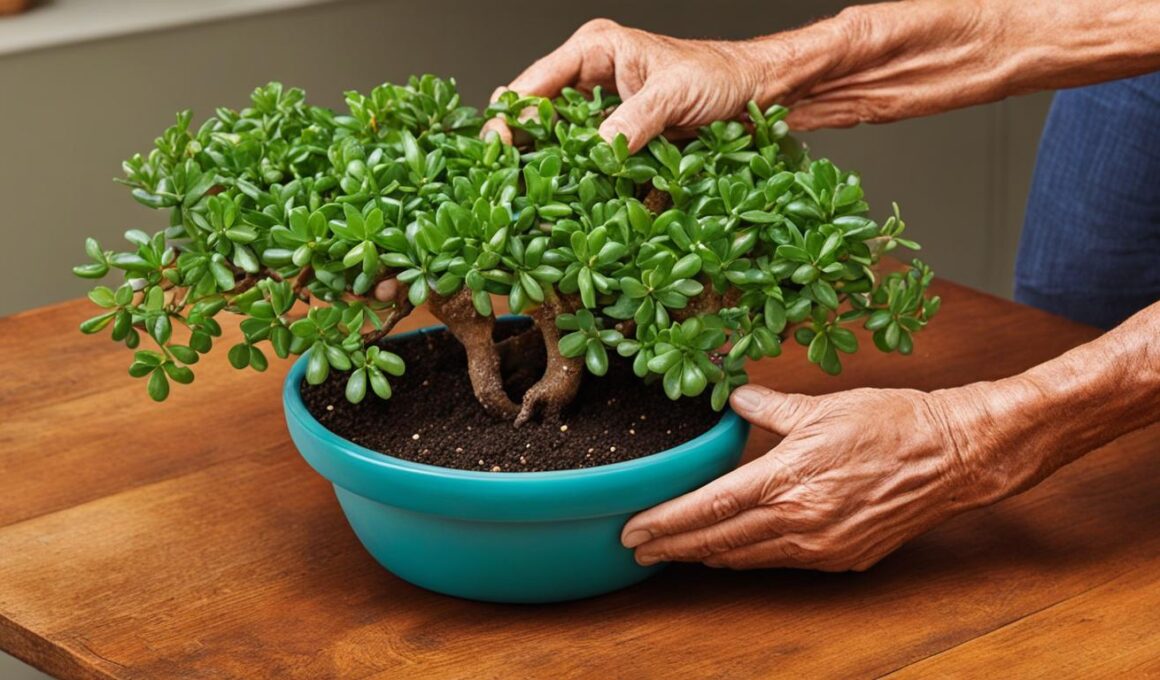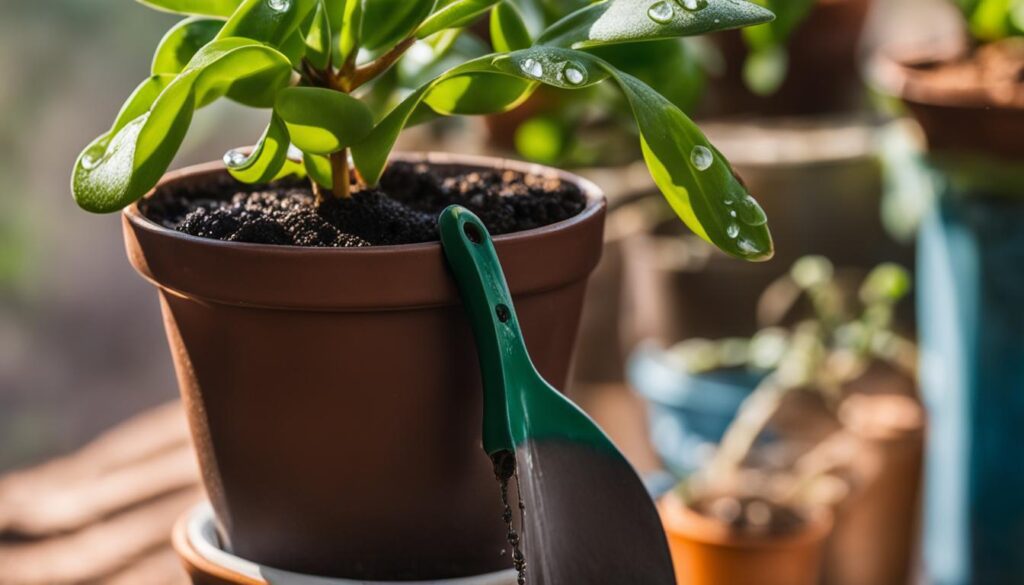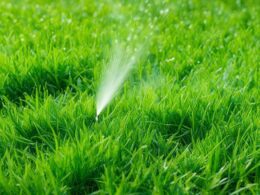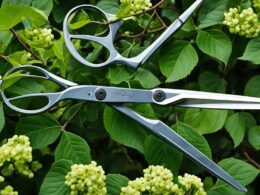Are you a proud owner of a jade plant but notice that it’s not thriving as it should be? It may be time to consider repotting your jade plant to ensure its healthy growth. Repotting is a crucial step in jade plant care, and in this guide, we’ll walk you through the process so you can confidently repot your jade plant and watch it flourish.
There are several signs that indicate it’s time to repot your jade plant—such as a wobbly and pale appearance, roots growing out of drainage holes, the plant easily falling down, and water running straight through the pot without wetting the soil. These signs suggest that your plant has outgrown its current pot or the soil has become compacted, preventing proper drainage and nutrient absorption.
When repotting a jade plant, you have three options to consider: using a bigger pot, using the same pot with new soil, or changing the top layer of soil. The pot size is important as it should be slightly larger than the previous one to allow the soil to dry out properly. Additionally, using the right soil is crucial for the health of your jade plant.
In the next sections, we’ll guide you through the steps for repotting your jade plant and provide essential aftercare tips to ensure a successful transition. Let’s get started!
Steps for Repotting a Jade Plant
Repotting a jade plant is a simple process that can help promote its healthy growth. By following a few easy steps, you can ensure that your plant thrives in its new home. Here’s a step-by-step guide on how to repot a jade plant:
- Start by watering the plant to loosen the soil from the pot. This will make it easier to remove the plant without damaging the roots.
- Gently remove the pot, taking care not to pull on the trunk or branches. If the plant is stuck, you can use a small knife to cut the soil loose from the edges of the pot or tap on the outside of the pot with a tool.
- Once the plant is out of the pot, it’s time to do a root control. Inspect the roots and remove any dead or rotten ones. This will ensure that the plant receives proper nutrition and prevents the spread of disease.
- If you’re using the same pot, shake off the old soil, and cut away about 25% of the roots. Trimming the roots will encourage new growth and prevent overcrowding.
- Before placing the plant back into the pot, make sure to clean the pot thoroughly. This will help prevent any potential infections or diseases.
- Add a layer of fresh soil to the bottom of the pot. The ideal soil for repotting a jade plant is a well-draining mix specifically formulated for cacti and succulents. Place the plant on top of the soil, ensuring it is centered.
- Add more soil around the plant, gently firming it with your fingers. Avoid compacting the soil too much to allow for proper aeration and drainage.
- Water the plant until the water exits through the drainage holes at the bottom of the pot. This ensures that the roots are thoroughly moistened.
- Check if the plant needs more soil and add it accordingly. Avoid overfilling the pot, as this can lead to waterlogging and root rot.
Following these steps will help you successfully repot your jade plant and provide it with a fresh start for healthy growth. Remember to give your newly repotted jade plant some time to adjust to its new pot and environment.
Aftercare for Repotted Jade Plant
Repotting a jade plant is a stressful process for the plant, so it’s important to provide adequate aftercare. Here are some essential tips for post-repotting care to ensure the successful recovery of your repotted jade plant:
- Placement: Choose a bright and sheltered area for your jade plant, away from direct sunlight. This will help the plant acclimate to its new environment without being exposed to excessive heat or intense light.
- Watering: Follow the plant’s watering schedule, which can be found in Planta or any other care app specific to jade plants. It’s crucial to provide the right amount of water, keeping the soil evenly moist without overwatering. Avoid letting the soil dry out completely.
- Feeding: During the recovery period, it’s advisable to avoid feeding the jade plant. The new soil used during repotting already contains plant food, so additional fertilizer is not required. Wait until the plant has fully acclimated before resuming its regular feeding routine.
It’s important to note that the recovery period for a repotted jade plant can take approximately a month. During this time, closely monitor the plant’s progress and make adjustments to its care as necessary. By providing the right post-repotting care, you can help your jade plant thrive and regain its vitality in its new pot and soil.
Conclusion
Repotting a jade plant is an important aspect of its care, especially when it starts showing signs of stunted growth or overcrowding. By following the right steps and using proper techniques, you can ensure the health and growth of your jade plant for years to come.
Firstly, selecting the right pot size is crucial. Choose a pot that is slightly larger than the previous one, allowing for proper drying of the soil and root expansion. This will provide enough space for the jade plant to grow and thrive.
Secondly, using the recommended soil is essential. Opt for a well-draining soil mix that is specifically formulated for succulents or cacti. This will help prevent overwatering and root rot, which can be detrimental to the plant’s health.
Lastly, providing appropriate aftercare is key. Place the repotted jade plant in a bright and sheltered area, away from direct sunlight. Follow a regular watering schedule and avoid feeding the plant during the recovery period, as the new soil already contains enough nutrients.
By following these repotting tips and guidelines, you can successfully repot your jade plant and enjoy its beauty and prosperity in your home or garden. Remember to monitor the plant’s progress and adjust the care as needed. With proper repotting and care, your jade plant will continue to thrive and bring joy for many years to come.
Will Repotting My Jade Plant Help in Combating Mealybugs?
Yes, repotting your jade plant can help combat mealybugs on jade plant. When you repot, you remove old, infested soil and replace it with fresh, sterile soil, effectively removing many mealybugs and their eggs. Additionally, repotting can help refresh the plant’s health and make it more resistant to future infestations.










